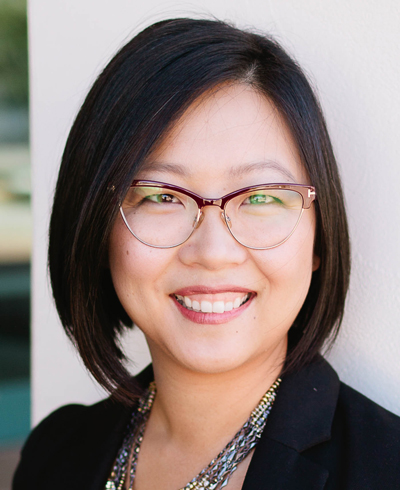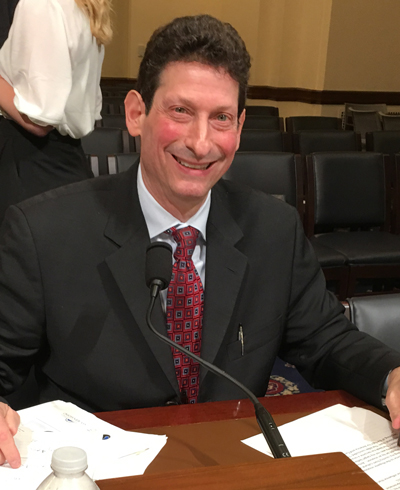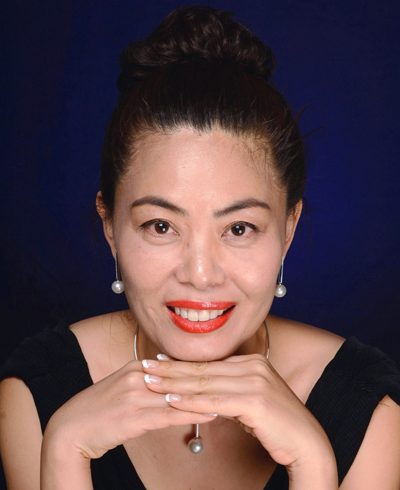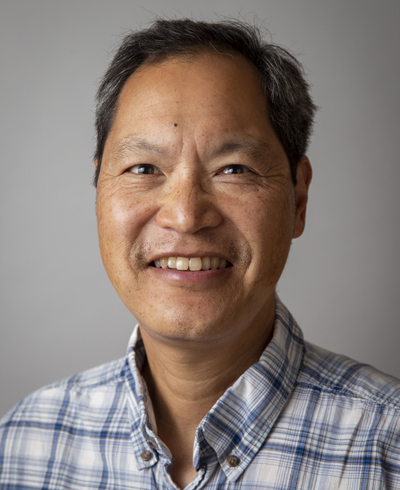
RACISM AND XENOPHOBIA
IN THE AGE OF COVID-19
CSU faculty members share tips on how to be part of the solution.
“Inclusive excellence is the CSU's most treasured core value, and we are committed to making our campuses places where a rich diversity of people, voices and ideas are welcomed – and can thrive. Racism, bigotry and hate simply have no place at the CSU.”
– CSU Chancellor Joseph I. Castro
HISTORY REPEATS ITSELF
“We know from Asian American history that whenever there was a disease outbreak, we were blamed and scapegoated, so it was to be expected,” Dr. Jeung says. “To get resources and the government responsive, we had to document the incidents. Initially, I used secondary sources through newspaper accounts. Once we were able to demonstrate these issues were increasing, we started our own website,
Stop API Hate, where people could provide firsthand accounts.”
He uncovered more than 1,100 cases of harassment, threats and assaults directed against Asian Americans in just the last two weeks of March. Those accounts range from subtle acts of shunning to overt physical attacks. Visitors to the site shared occurrences of people not wanting to sit next to them, being denied services such as ridesharing and having items thrown at them.
“Asians are being harassed if they're wearing a mask or if they're not wearing a mask,” Jeung says. “There's a large number of cases where people are being spat upon and coughed at, and people yell and scream. There's also been a lot of online posting of racist memes. People are clearly experiencing fear and feel threatened, so they need a source on which to blame their anxiety. If they feel threatened, they go into fight-or-flight mode; fight would be to harass or attack Asians and flight would be to shun them.”
At the start of the outbreak, racist attacks were occurring at schools and on public transit, but now that we’ve been asked to stay home by local government, they’re happening at grocery stores. Jeung has found that women are being harassed two to three times more than men, while 60 percent of impacted people are Asian, but not Chinese.
STAND UP, SPEAK OUT
Adding to the already charged atmosphere are
political rhetoric and media representations connecting the virus to Chinese people, Jeung says. “That association has created a racial profiling process. Just as 9/11 impacted the Muslim community and turbans became radicalized, COVID-19 is impacting the Asian American community. Face masks are being radicalized.”
Jeung’s motivation behind his project was threefold: to give individuals a chance to air their concerns, to provide resources and to make strong specific policy interventions. “Reporting gives people a voice to share their grievances,” he explains. “We know there's been a lot of bullying against youth, so we want to develop anti-bullying curriculum and mental health resources. We've also used our numbers to encourage government officials to denounce anti-Asian rhetoric and discrimination. Governor Newsom came out and made a strong statement. And our reports were included in the congressional house and Senate resolutions.”
As the uncertainty of the pandemic continues, Song admits to experiencing loneliness in the last few months that is difficult to explain to her fellow Americans. “I am the only one from my Chinese side of the family who lives in the U.S.,” she shares. “It has been extremely hard to read and hear about the suffering and daily struggles of my Chinese family and friends from thousands of miles away. When the pandemic started, my Chinese culture and its people were mocked and demonized. I strongly agree with Toni Morrison that ‘racism will disappear when it’s no longer profitable and no longer psychologically useful.’ As a society, we have to address the long-held racial bias and racial tensions among all of us.”
We asked five CSU faculty members to offer advice on how to combat racism in a time of fear.

NELLIE TRAN
Ph.D., San Diego State, Associate Professor in the Community-Based Block Multicultural Counseling Program, Vice President of the Asian American Psychological Association
“Historical context helps us to see how already marginalized groups of people tend to be scapegoated in times of crisis and fear (e.g., the LGBTQIA community during HIV/AIDS, African/African Americans during the Ebola outbreak, Muslims post-9/11). Find shared humanity. Consider Chinese peoples as the first victims in this pandemic. And use evidence-based practices to attain actual safety and security during times of crisis by washing your hands and practicing social/physical distancing.”

BRIAN LEVIN
J.D., Cal State San Bernardino, Professor, Criminal Justice, Director of the Center for the Study of Hate & Extremism
“With data key to fighting bigotry,
California State University, San Bernardino’s Center for the Study of Hate & Extremism (CSHE) found a spike in anti-Asian hate crime, bigoted speech online and conspiracy theories, along with a temporary decline in online anti-Asian bigotry after conciliatory statements by the president, which is consistent with earlier research. CSHE analytics have consistently shown that at times of great societal stress, something as simple as conciliatory words by a president can not only soothe, but also flatten the curve of bigotry.”

CHUNYAN ECHO SONG
Ph.D., Chico State, Professor, Sociology
“To combat bigotry and racism, we need solid public education on the social construction nature of race and racism. Political leaders need to step up and take a strong stand condemning bigotry and take long-lasting actions to address systematic racism in our country. And please do reach out to your Asian American friends, neighbors and local Asian communities. Your kindness, support and solidarity mean a lot to a vulnerable minority group that is caught in a crisis within a crisis. Be kind, reach out and show your support!”

RUSSELL JEUNG
Ph.D., San Francisco State, Chair and Professor, Asian American Studies
“An Asian wearing a mask might trigger something more than an African American or a Latino wearing a mask. Because it's an automatic racial profiling response, you have to check your biases. We have to stop ourselves and treat all people with dignity and respect, especially during this time of crisis. As bystanders, if you witness something, it's helpful to approach the affected person and check in. By doing so, it gives greater numbers for the victim than the assailant. Don't give any voice to the assailant and don't engage them.
“For Asian Americans who’ve been harassed, seek support. I'm afraid that Asian Americans who see others being shunned and attacked will internalize that stigmatization. Since I teach ethnic studies, what we want to do is build up people's sense of self and build resilience.”

G.T. REYES
Ph.D., Cal State East Bay, Assistant Professor, Department of Educational Leadership
“Let us remember that when a disaster happens, that is the perfect time for a government to marketize, privatize and push forth policy that has had difficulty in movement before. Model minority myths often cause our Asian Pacific Islander community to forget how we are racialized in the U.S. Our ‘American-ness’ is always fragile, so at any given moment, we can be reminded that we are less than. So, be prepared for this reality by (re)learning the ways history repeats itself. Equip yourself with the historical and systemic knowledge of how racial oppression functions. Ethnic studies is a solid place to start.
“Develop your language toolbox and practice. As you (re)learn the socio-historic context of racial oppression, particularly in times of disaster, pay extra attention to the language used. Then, practice applying that language with a trusted community. Have conversations with trusted folks who incorporate your (re)learnings.
“Yes, that did just happen, so name it. Bypass the designed effect of, ‘Did that just happen?’ that racial microaggressions cause. Yes, it did. If there are others around you when a racist act happens, they likely noticed it, too. If no one calls it out, then a hostile environment gets created. Saying nothing normalizes that environment. I know it can be scary and even exhausting to have to draw attention to oppression, but being imprisoned by fear and fatigue will not set us free.”
To learn more about the CSU's commitment to inclusive excellence, visit our
diversity page.
Story: MICHELLE MCCARTHY
Share this story